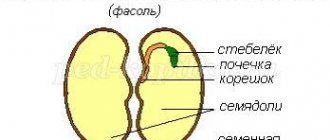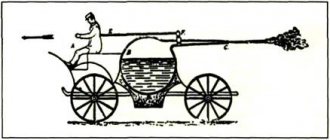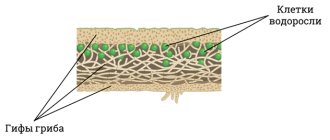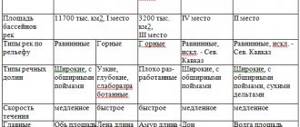What types of groups are there?
From the moment of birth a person is a member of one group or another. Let's consider together what groups you belong to, for example. First of all, you are a member of the family. And family is a special group. Due to the fact that it is small in composition, it is classified as a small group.
| Question Urban and rural residents are also groups. You, as a resident of a city or village, belong to one of them. Of course, they are different from a group such as a family. Indicate what these differences are. |
You are in 6th grade. A school class is also a group. All the students in your class know each other, you have mutual responsibilities and rights, and you are united by your studies at school.
And perhaps you attend a sports section, or a theater group, or a choir club. Various circles and clubs (for example, a club for philatelists, tourists, lovers of poetry, sports, theater or music) are also groups.
| Question There are many groups that bring people together. Each has a common cause and a common goal. Think and say what common cause, for example, a school class has; at the theater group; at the basketball team. |
Your parents, having received a profession, became members of professional groups, such as workers, farmers, engineers, doctors, miners, etc.
The people are also a special group of people. Each nation differs from other nations in its traditions, songs, fairy tales, and legends.
Among the groups you can distinguish those that you choose, and those in which you find yourself not by choice. In this case, the group, as it were, chooses you. The group that chose you is, for example, a school class (your parents brought you and enrolled you in school) or your family (having been born, you already found yourself a member of a group of people called “family”).
Summary of a social studies lesson on the topic “A person in a group”
LESSON SUMMARY
Subject: ____________________ Class:_______ Date___________
TOPIC: Man in a group
Goals and objectives:
introduce students to the reasons for the formation of groups and the laws of their existence; characterize the types of groups, sanctions in force in the group; explore leadership traits.
Planned results:
students must characterize the types and laws of various groups; compare social objects, finding out their common features and differences; master the principles of working with a textbook, the text of which contains diagrams, additional text and questions, as well as conduct a discussion, heuristic
conversation, work with documents, analyze problems, solve problematic problems, work in a group.
Formed UUD:
subject:
apply the conceptual apparatus (
person
,
group
,
leader
,
ritual, sanctions
) to reveal the essence of a person’s position in the group;
identify different types of groups; explore the roles of a person in a group, the causes and consequences of sanctions of reward and punishment in a group; analyze real social situations, choose adequate ways of knowing; systematize social science information and present it in the form of a diagram; meta-subject
-
1) communicative:
independently discover and formulate an educational problem, put forward versions of its solution; share knowledge between team members to make effective joint decisions;
2) regulatory:
determine the sequence of intermediate goals taking into account the final result, draw up a plan for the sequence of actions;
3) educational:
carry out advanced information search; analyze, compare, classify and summarize facts and phenomena; give definitions of concepts;
4) personal:
awareness of which group you are on the same path with; express your opinion on the manifestation of real and false leadership; formation of analysis skills.
Equipment:
textbook, diagrams for the lesson, a package with working material for working in groups, multimedia presentation.
Type of lessons:
discovery of new knowledge.
Progress of lessons
- Organizing time
- Motivational-target stage
— Listen to the parable and answer the questions.
One village was located in the mountains, where a spring with tasty water flowed. But this water was harmful to human health, and everyone who drank it developed fat folds on their necks, and their heads turned with great difficulty. Local residents drank this water from generation to generation, and everyone had ugly necks.
One day a man came to the village from distant places. He was immediately surrounded by a crowd of curious women. They looked at his neck in amazement and laughed at the fact that it was too thin. The stranger was completely at a loss and, unable to bear it, exclaimed: “Well, that’s enough! Stop making fun of me! Better look at your growths - you're just freaks! You should get treatment and cut out these tumors! And you laugh at my thin neck!”
The women laughed even harder. They pointed at each other and said that everyone in the village is alike and this has been the case from time immemorial. They never left their village, and it was impossible to convince them of their ugliness.
Question for the class
— How did you understand the meaning of this parable?
(Students' answers.)
Let's check your knowledge on the topic of previous lessons “Interpersonal Relationships” using testing.
Option 1
A1. Positive feelings in relationships between people are most often caused by:
- antipathy; 3) sympathy;
- negative; 4) denial.
A2. The most common type of interpersonal relationship:
- friendship; 3) friendship;
- acquaintance; 4) partnership.
AZ. Of the two judgments about stereotypes in interpersonal relationships: a) stereotypes give a simplified or generalized idea of a person or group; b) being captured by a stereotype, it’s easy to get lost:
- Only a is true; 3) both judgments are correct;
- Only b is true; 4) both judgments are incorrect.
C1. Interpersonal relationships differ from all other human contacts in that they are mutual in nature. Give three examples of this feature.
Option 2
A1. Interpersonal relationships are understood as a special connection between a person:
| Pitchfork relationships | Example |
| A. Personal B. Official | Principal-teacher relationship Relationship between two brothers Friends talking on the street Lawyer's appeal to the judge |
C1. Name the types of interpersonal relationships. Give a description of one of the types.
Answer the questions given in the “Remember” section on p. 58 textbook.
(Students' answers.)
Lesson topic: “A person in a group.”
- Guess what we will talk about.
- What questions do we have to answer?
(Students' answers.)
Lesson Plan
- What types of groups are there?
- The groups we choose.
- Who can be a leader?
- What is possible, what is not and what happens.
- About rewards and punishments.
- Which group are you on the same path with?
Problematic questions of lessons
- Why do people join groups?
- What does a group give a person?
- Introduction to new material
You are part of one small group - a class. How do you feel in this group? Who influences you and how? This is what we will talk about in our lessons.
- Work on the topic of the lessons
- What types of groups are there?
The topic that we will now consider is very relevant to you. How important it is, when you wake up early in the morning, to remember that very soon you will meet those who are close and interesting to you. Then the mood is cheerful, and you want to do everything that needs to be done with pleasure. And vice versa…
Exercise:
read paragraph 1 § 7 on p. 58-59 of the textbook, name the groups that include you, your family, and friends.
(During the execution of the task, a diagram is drawn up.)
- Tell me, can a person live outside of society? (Students' answers.)
Groups we select
- How do we get into groups?
- Exercise
: working with paragraph 2 § 7 on p. 59-60 of the textbook, determine the ways of forming groups, characterize this process. Present your work clearly, in the form of a diagram.
- (During the execution of the task, a diagram is drawn up.)
Problem task.
Imagine that we are at a discussion club meeting on the topic “A person in a group.” During the discussion of the problem, two approaches were identified: 1) the group suppresses the personality and abilities of a person; 2) only in a group does a person show his abilities and talents. You need to join one group or another depending on your opinion. Give reasons for your position.
(While completing the task, the arguments for and against are written on the board.)
Exercise:
answer the questions on p. 60 textbook, fill out the table.
| What the group taught | What did I teach the group? |
(Checking the completion of the task.)
- Who can be a leader
How often do we hear the following expression: “He is a born leader.” What do people mean by these words? What kind of leaders are they? Can everyone become one? Is being a leader good or bad? Surely you have thought about these questions. Let's try to find answers to them together.
— What associations do you have when you hear the word “leader”?
(Students' answers.)
Leader
(from the English
leader
- leader, first, going ahead) - a person in any group who enjoys great, recognized authority, and has influence on the rest of the group.
The Group recognizes his right to make responsible (managerial) decisions in situations that are significant to it. A leader is the most authoritative person who plays a central role in organizing joint activities and regulating relationships in a group. Today the word is leader
has received several interpretations. Get to know the diagram. (You may be encouraged to comment on it.)
(Checking the completion of the task.)
Thus, in our time, the concepts of “leader” and “success” have become synonymous. Any person who decides to start his path to success simply must become a leader for himself at the beginning of this path. Without this, any of his endeavors will end in failure. If a person is not able to motivate himself, cannot set goals for himself and begin to take actions to complete them, then how will he demand this from other people?
A person may have a different position in different groups. For example, a teenager occupies an inconspicuous place in the class, but in the sports section he achieved outstanding results, earning the title of leader.
Exercise:
working with paragraph 3 § 7 of the textbook, get acquainted with examples of leadership and analyze them by answering the following questions.
- Why does a person play different roles in different groups?
- Why do you think the quiet boy became the leader in the class?
- Can a strong guy be considered a leader? Why?
- Can a diligent student be considered a leader? Why?
- What personality traits do you think are the most important?
(Checking the completion of the task.)
English writer Northcote Parkinson states that there are six basic elements of leadership that can be acquired or developed through study and practice.
Question for the class
- Do you think all of the listed qualities are necessary for leadership? Give reasons for your answer.
(Students' answers.)
Many more qualities can be added to this list, but there are at least two important qualities - the ability to speak clearly yourself and the ability to listen when others speak.
Leadership is a complex and ambiguous phenomenon. A leader always has power, and power, as they say, corrupts people. A power-hungry leader in a dependent group can turn into a tyrant. He can lead the team to both high and low goals.
Being a leader is difficult. The team is demanding of the leader. Leadership is a big responsibility. At the same time, the role of a leader teaches a person a lot, enriches him emotionally and morally, and develops business qualities.
The functions of leaders can be different.
- Study the table data.
| Leader type | Essence |
| Emotional Leader | Plays a major role in interpersonal relationships, on which the psychological climate in the classroom, the prevailing type of relationships among classmates, and accepted moral values depend. Most often does not feel the need to manage the classroom |
| Business leader | Plays a major role in solving the tasks assigned to the class - educational, labor, sports, creative. Strives to achieve a goal, regardless of the feelings and moods of group members, he can easily cause conflict. Feels the need to manage the classroom |
| Absolute leader | A student who is successful in all areas of class life |
Question for the class
- Who creates a leader in a class team and how? Justify your answer.
(Students' answers.)
So, we have come to the conclusion that a leader is created by the team and joint activities.
- What does the fact that there is no leader in the class mean?
(Students' answers.)
Today, scientists reject the idea that leadership is a quality that is either born with it or is not there at all. They argue that the art of being a leader can be learned.
- What is possible, what is not possible and what happens behind it
In any established group there are certain rules.
- Why do you think?
- How can this manifest itself externally?
(Students' answers.)
The rules by which a group lives are called group norms.
In a group, norms, rules, customs, traditions, rituals, and ceremonies are born. A person lives according to the laws of the group.
- Listen to the story and answer the questions.
Excerpt from M. Gorky’s story “Old Woman Izergil”
Many thousands of years have passed since this happened. Far across the sea, at sunrise, there is a country. There lived a mighty tribe of people, they tended herds and spent their strength and courage hunting animals, feasted after the hunt, sang songs and played with the girls.
One day, during a feast, one of them, black-haired and tender as the night, was carried away by an eagle, descending from the sky. The arrows the men shot at him fell, pitiful, back to the ground. Then they went to look for the girl, but they didn’t find her. Twenty years later she herself came, exhausted, withered, and with her was a young man, handsome and strong, like she herself twenty years ago. And when they asked her where she was, she said that the eagle carried her to the mountains and lived with her there. like with my wife. Here is his son, but his father is no longer there; when he began to weaken, he rose, for the last time, high into the sky and, folding his wings, fell heavily from there onto the sharp ledges of the mountain, crashing to his death on them...
Everyone looked in surprise at the eagle’s son and saw that he was no better than them, only his eyes were cold and proud, like those of the king of birds. And they talked to him, and he answered if he wanted, or remained silent, and when the elders of the tribe came, he spoke to them as to his equals. This offended them, and they, calling him an unfeathered arrow with an unsharpened tip, told him that they were honored and obeyed by thousands like him, and thousands twice his age. He, boldly looking at them, answered that there were no others like him; and if everyone honors them, he does not want to do this.
Oh!.. then they got really angry. They got angry and said: “He has no place among us! Let him go wherever he wants."
He laughed and went where he wanted - to one beautiful girl who was looking at him intently; went to her and, approaching, hugged her. And she was the daughter of one of the elders who condemned him. And although he was handsome, she pushed him away because she was afraid of her father. She pushed him away and walked away, and he hit her and, when she fell, he stood with his foot on her chest, so that blood splashed from her mouth to the sky, the girl, sighing, writhed like a snake and died.
Everyone who saw this was seized with fear - this was the first time a woman had been killed like this in front of them. And for a long time everyone was silent, looking at her, who lay with open eyes and a bloody mouth, and at him, who stood alone against everyone, next to her, and was proud, did not lower his head, as if calling punishment on her. Then, when they came to their senses, they grabbed him, tied him up and left him like that, finding that killing him right now was too simple and would not satisfy them.
And so they gathered to come up with an execution worthy of the crime... They wanted to tear him to pieces with horses - and this did not seem enough to them; they thought of shooting everyone an arrow at him, but they rejected that too; they offered to burn him, but the smoke of the fire would not allow him to be seen in his torment; They offered a lot - and did not find anything so good that everyone would like it. And then one wise man said, after thinking for a long time: “Let's ask him why he did this?” They asked him about it. He said: “I killed her because, it seems to me, she pushed me away... And I needed her.” “But she’s not yours!” - they told him. We talked with him for a long time and finally saw that he considers himself the first on earth and sees nothing but himself. Everyone even became scared when they realized the loneliness he was dooming himself to.
- His punishment is in himself! Let him go, let him be free. This is his punishment!
And then a great thing happened. Thunder struck from Heaven, although there were no clouds on them. It was the heavenly powers that confirmed the speech of the wise man. Everyone bowed and dispersed. And this young man, who now received the name Darra, which means: rejected, thrown out, the young man laughed loudly after the people who abandoned him, laughed, remaining alone, free, like his father. But his father was not a man... And this one was a man. And so he began to live, free as a bird. He came to the tribe and kidnapped cattle, girls - whatever he wanted. They shot at him, but the arrows could not pierce his body, covered with the invisible veil of the highest punishment. He was dexterous, predatory, strong, cruel and did not meet people face to face. They only saw him from a distance. And for a long time he, alone, hovered around people like that, for a long time - more than a dozen years.
But then one day he came close to the people and, when they rushed at him, did not move and did not show in any way that he would defend himself. Then one of the people guessed and shouted loudly: “Don’t touch him! He wants to die! And suddenly he rushed at the people, picking up a stone. But they, dodging his blows, did not inflict one on him, and when he
tired, he fell to the ground with a sad cry, then they stepped aside and watched him. So he stood up and, picking up the knife that someone had lost in the fight with him, hit himself in the chest with it. But the knife broke, as if someone had hit a stone with it. And again he fell to the ground and banged his head against it for a long time. But the ground moved away from him, deepening from the blows of his head. "He can't die!" - people said with joy. And they left, leaving him.
He lay face up and saw mighty eagles swimming high in the sky like black dots. There was so much melancholy in his eyes that it could have poisoned all the people of the world with it. So, from that time on he was left alone, free, awaiting death. He has no life, and death does not smile on him. And there is no place for him among people... This is how the man was struck for his pride!
Questions for the class
- Is it possible to ignore the laws of the group?
- What consequences will occur in this case?
(Students' answers.)
- About rewards and punishments
In ancient Greece, a stimulus was a wooden stick with a pointed tip, which was used by bull and mule drivers to urge lazy animals. A person also needs incentives. Reward and punishment as methods of stimulating activity are the most famous and popular in the history of mankind.
Exercise:
read paragraph 5 § 7 on p.
62-63 of the textbook and, dividing into two groups, characterize rewards (first group)
and punishments
(second group),
supporting them with examples.
(During the execution of the task, a diagram is drawn up.)
Let's conduct an experiment
. (Seven participants are chosen at will.) The class is shown a portrait of an elderly African-American man.
kanza. The first conscientiously describes this portrait on his own. Six others read out the resulting text: “Before us is a middle-aged man, with bright blue eyes, a straight nose, and beautifully contoured lips. This is a person who has serious life experience and has gone through a lot in his lifetime. But he remains forever young, as his eyes sparkle with enthusiasm and youth.” The point of the experiment: testing the subject to change his opinion under the influence of pressure from other group members.
So, now we have seen in practice the manifestation of a special form of behavior in response to group pressure, namely submission to the group.
Question for the class
- Is it good or bad? Justify your position.
(After the students’ answers, a diagram is drawn up.)
Creative task.
Imagine that you are in a group meeting. Divide into three teams, each playing the role of a specific member of the group.
First group
agrees with the opinion of the group and changes his behavior in the direction of group pressure;
second group
resists group pressure, thinks and acts contrary to it;
third group
- self-determining personality (selectively reacts to the influence of the group, agreeing with its opinion or not accepting it, depending on the specific situation).
Questions for the class
- Tell us about your relationship in the group.
- Which teenager is most likely to be influenced by the group? Can't resist her?
(Students' answers.)
Thus, relationships in a group are influenced by the degree of self-esteem. We are ready to agree with those who: 1) are close to us in views: 2) are an authority for us; 3) embodies power.
- Which group are you on the same path with?
Which group are you on your way with? Let's answer this question by completing the following task.
Problem task.
The class is divided into two groups. After reading paragraph 6 § 7 of the textbook on p. 64-65 it is necessary to compose questions to which you can only know an unambiguous answer (“yes” or “no”). The questions may be as follows.
- Can a person be a member of more than one group?
- Do groups live by special rules?
- Does the group absorb the power of all the people who are part of it?
- A person, being in a group, is not responsible for his own behavior?
- Do group actions alleviate a person's guilt?
- Will real friends insist on things that could harm your health?
- Are there cases when a person, being part of a certain group, considers members of other groups inferior to himself?
(Teams ask questions to each other.)
The authors of the textbook claim: “Hate and dislike for other people interfere with communication and destroy a person’s personality.”
- Do you agree with this statement?
- Why?
(Students' answers.)
Exercise:
Having studied the text of the heading “Once upon a time there lived a man” on p. 65-66 of the textbook, answer the questions.
- Who did you hear about?
- What does this character have to do with the topic of the lessons?
- Reflection
Exercise “Mood Target”.
With this exercise we will express our mood. A day is one shot. What mood area did he fall into today? Depending on this, a circle is drawn (attached) to one of the color zones indicated on the poster (whatman paper) - red, yellow, blue, green, purple, brown, gray and black.
- Summing up the lessons
Let's test ourselves and complete several tasks.
- Task 3 of the section “Let’s test ourselves” on p. 66 textbook.
- Task 2 of the section “In the classroom and at home” on p. 66 textbook.
- Task 3 of the section “In the classroom and at home” on p. 66 textbook.
Homework
- Read § 7 of the textbook.
- In your workbook, complete one of the three tasks to choose from for § 6 of the textbook (task 2, 3 or 4).
11
Role and status
How a person manifests himself in a group (social studies or psychology are usually the subjects in which schoolchildren study this issue) depends on the individual position of a participant in a particular association, his status. Each group gives its member a certain status. He, in turn, presupposes one role or another. A person’s status in a group is his position in relation to other members of the association. A role is a specific set of functions that are assigned to a group member by other group members. It also depends on the specific activities that are characteristic of a given group. There are a large number of typologies of roles in social associations. However, most of them are built according to the criteria of power and subordination or preference and rejection.





